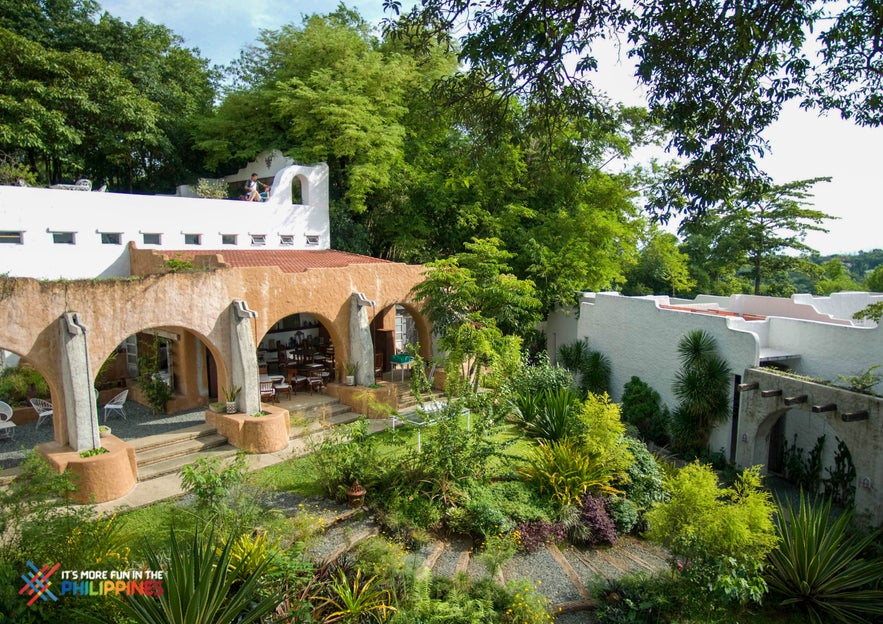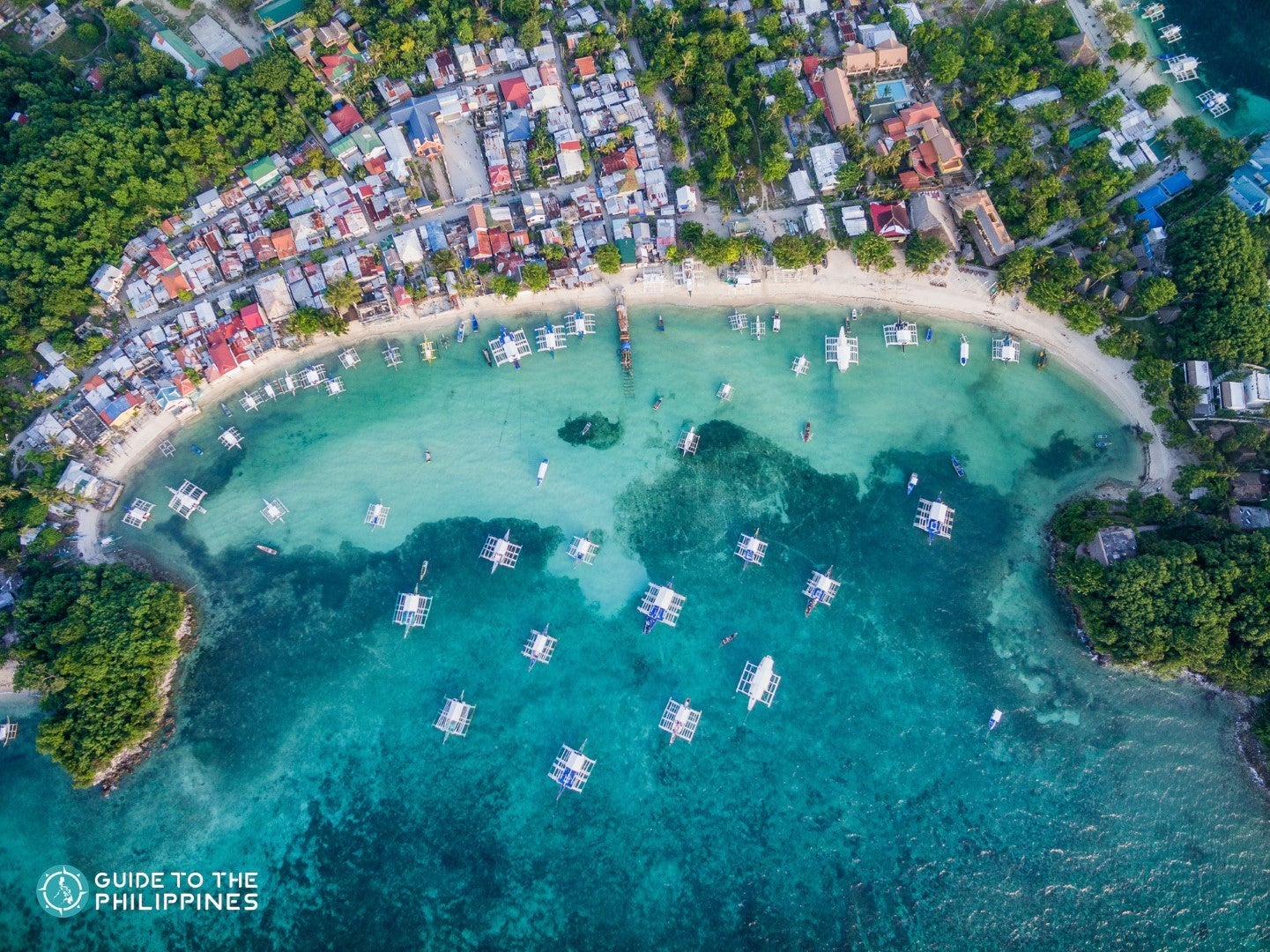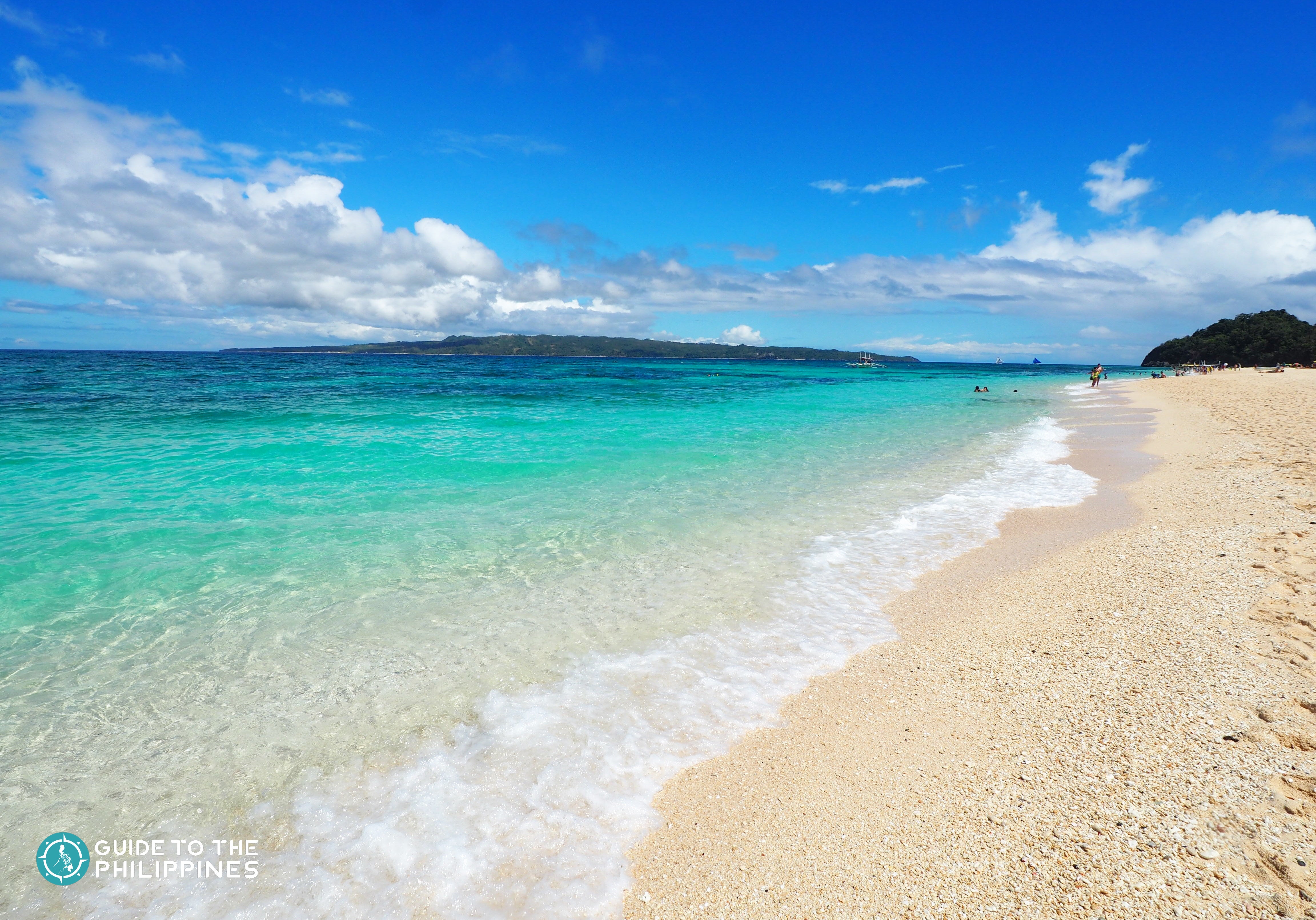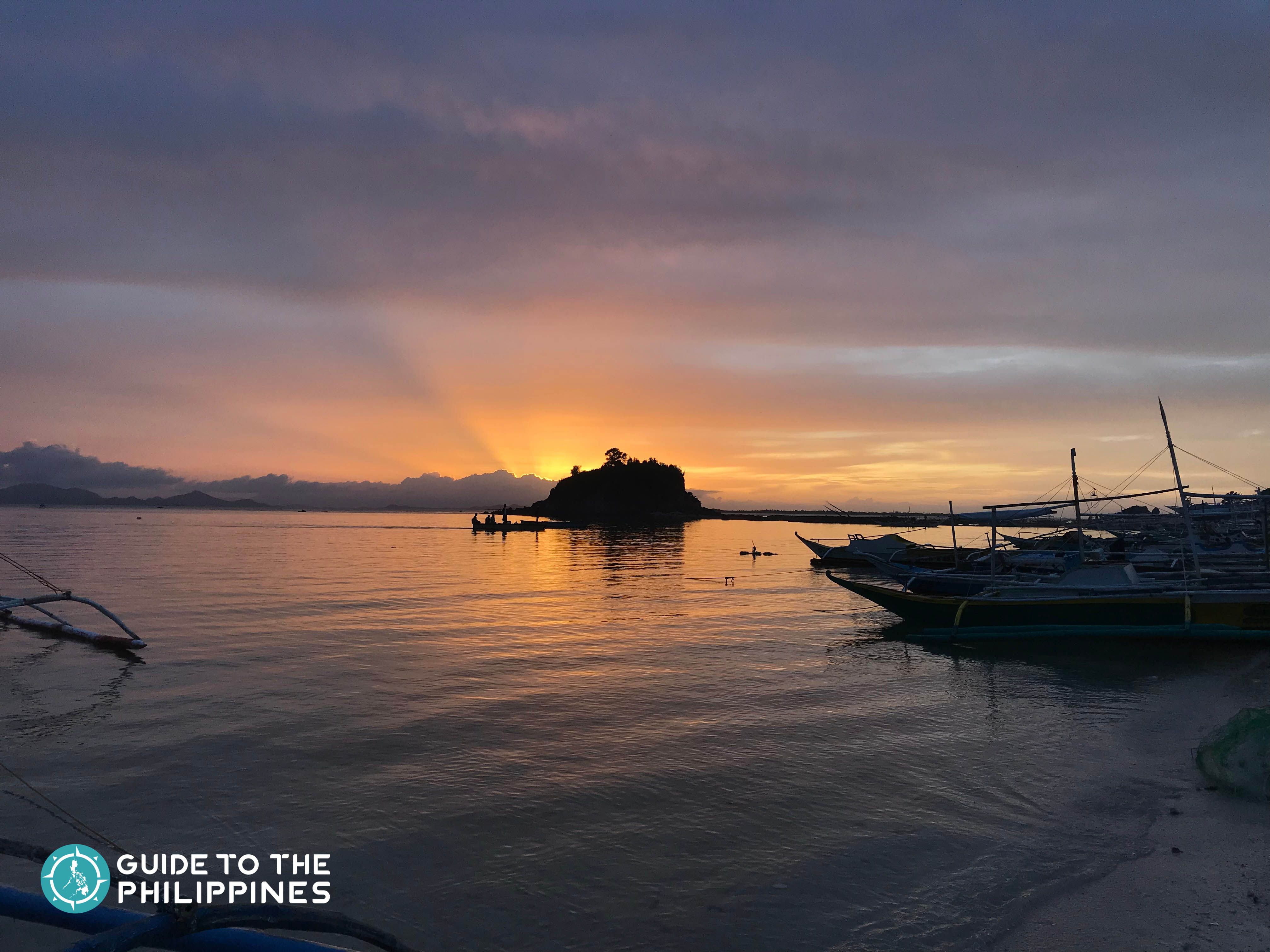
Antipolo City, located 13 KM east of the Philippine capital city of Manila, is the capital of Rizal province and a popular destination for weekend getaways among local travelers.
- Find the best hotels in Metro Manila for your vacation
- Read about the best spa and wellness resorts in the Philippines
Antipolo is just a few hours away from Manila and sits at the foot of the longest mountain range in the country called the Sierra Madre. The tallest part of Antipolo stands at an elevation of 137 M, giving its surrounding areas a cooler climate and a great vantage point for enjoying a panoramic view of the Manila skyline best experienced at Antipolo restaurants and Antipolo coffee shops.
The Antipolo Church is a famous Catholic pilgrimage site and attracts many visitors to its centuries-old Marian shrine. The city is known for its beautiful natural surroundings and delicious local delicacies like suman, a rice cake wrapped in banana leaves. It also offers a variety of indoor and outdoor attractions for visitors from all walks of life.
If you’re planning on joining Rizal tours, take a look at some of the best Antipolo tourist spots and resorts to include on your Rizal tour package.
10. PACEM Eco Park
PACEM, a portmanteau that stands for Peace and Care for Earth Ministry, is an ecological park situated inside the Assumption campus, a Catholic school in Antipolo. It is roughly 30 KM from Manila and can be reached by land via the Sumulong Highway or Ortigas Ave.
- Book Rizal tour packages
The park was built to raise awareness about the importance of protecting the natural environment. It features a few rare zoo animals, a butterfly sanctuary, an organic herb garden, a tree house, an aviary, a pond, and a field house museum surrounded by a verdant forest filled with many species of plants and animals.
Upon entering the park, a well-lit museum displaying a wide variety of butterfly species greets visitors. The collection contains samples from different parts of the Philippines and Asia, while the lower part of the museum shows off various local sea shells from different parts of the country’s coastal areas.
The spacious aviary is home to many bird species that include parrots, owls, peacocks, ducks, turkeys, as well as a rare bird called a cassowary. Other animals like monkeys and deer are also in the eco park’s care. After seeing the zoo animals, follow the winding path and walk through a wooden bridge to see more of the jungle-like surroundings until you reach a tree house surrounded by an organic farm.
Visitors are free to harvest their own farm produce and purchase vegetables like papaya or cabbages from the garden. Nearby is a butterfly sanctuary and an herb garden for you to explore, while a picnic area may be used to relax and take in all the greenery. If you’re looking for a peaceful place to enjoy nature, the PACEM eco park is a great place to visit.
9. Nelly’s Mystical Cave
 Photo by Mystical Cave
Photo by Mystical Cave
Antipolo’s reputation as a pilgrimage site extends beyond the shrine of Our Lady of Peace and Good Voyage with the existence of Nelly’s Mystical Cave, an Antipolo tourist spot located in Sitio Boso-boso, Barangay San Jose. Just like the famous statue of the Virgin Mary at the Antipolo church, the cave is believed to be a place with religious significance, and the story of its discovery is as enchanting as a fairytale.
According to its owner Inday Nelly, she was 7 years old when she awoke from a dream that left her with visions of a mysterious cave. A sense of duty compelled her to leave her home town in Iloilo to travel the country in search of the natural underground chamber. Eventually, she found it in Antipolo. Using a makeshift explosive, she to blew up a tiny coin-sized opening into an entrance that led to her mystical cave. Inside she found intricate limestone formations that were shaped like biblical events and religious formations.
Today, the site may be reached through a steep set of stairs. Upon entry, you will be greeted by huge stalactites and stalagmites and a natural basin that collects dripping water from the rock formations. The water is believed to have healing properties, while the entire cave is up to 8 stories deep, with only the first floor open to tourists.
There are lighting fixtures everywhere that allow visitors to see interesting sights like glittering white walls in various corners, bell-shaped formations, and popular figures like the “Eagle Pride” and “Sheep of Humility”.
If you don’t mind hiking up a rocky cliff for roughly 15 minutes, then follow a local guide to bring you to the top of a hill located outside the cave. Upon reaching the summit marked by a life-sized wooden cross, you’ll be rewarded with a panoramic view of Rizal province and Laguna Lake.
8. Casa Santa Museum
 Photo by Casa Santa Museum
Photo by Casa Santa Museum
The Christmas season is the most popular holiday in the Philippines, and no other place exemplifies its significance more than the Casa Santa Museum, a place devoted to all things related to the Season of Giving.
Casa Santa Museum is located inside Jardin de Miramar Events Venue in San Isidro Antipolo City. It features more than 3,700 Santa and Christmas themed items collected from different parts of the world, highlighting various Christmas traditions and stories from other cultures. The museum is divided among 5 various attractions, namely Santa’s Toy Factory, Balay Belen, The Grinch, Christmas Village, and Lego Wall.
Santa’s Toy Factory is a replica of where Santa’s elves are hard at work making Christmas gifts for children. It displays statues of elves creating toys from different time frames worldwide, with wall clocks reminding them to stay on schedule, while another section shows a replica of a kitchen where elves have their meals during their breaks.
Next is the Balay Belen, a section that highlights nativity sets from various places worldwide that show different versions of the Christmas narrative. It is a collection built up through the years and collected with care for everyone to enjoy. After a heartwarming section comes an area dedicated to the popular Christmas-hating Dr. Seuss character known as The Grinch, where a life-sized figure is displayed.
The Christmas Village is home to a collection of Christmas themed items collected over the span of 5 years, and is arranged to look like a magical Christmas from a children’s storybook. Finally there’s the Lego Wall section which depicts different events and activities before Santa’s arrival in children’s houses.
7. Boso-Boso Church
 Photo by Boso-Boso Church
Photo by Boso-Boso Church
Formally known as the Nuestra Señora de la Annunciata Parish Church, Boso-Boso Church is a Roman Catholic parish church located in Sitio Old Boso-Boso, Barangay San Jose. First established by Franciscan missionaries in the mid 15th century, the church is more than 400 years old, making it one of the oldest churches in the Rizal region, certainly older than the more famous Antipolo Cathedral. It lends a serene presence in its remote location, hidden as it were in a leafy area on a valley beneath the Sierra Madre mountain ranges, seemingly frozen in time.
The ancient church is flanked by two majestic acacia trees and is surrounded by other leafy trees. There is a huge shaded courtyard in front of it while multi-colored San Francisco leaves stand beneath the trees. It has a sparse Romanesque architecture that has survived countless catastrophes, both man-made and otherwise, and therein lies its mysterious charm and ethereal beauty.
The Jesuits took over the church in 1741 but had to leave when they were expelled from the Philippines in 1768. A secular order took charge when a devastating earthquake damaged most of the structure in 1880. It was never rebuilt and could have been lost forever in the 1930s when the residents were forced by the American administration to leave the place because a dam was supposed to be built. The proposed dam project was eventually abandoned. A fire burned down what was left of the church during the Japanese occupation, but it was rebuilt by the Camillian order in 1986, restoring it to its present-day condition.
That the church is still around is a testament to the stability of its foundations and the unwavering faith of its Catholic devotees.
6. Hinulugang Taktak
 Photo by Hinulugang Taktak National Park
Photo by Hinulugang Taktak National Park
For first time visitors making their rounds on various Rizal tourist spots, an Antipolo tour package wouldn’t be complete without a stop at the Hinulugang Taktak, a popular tourist spot that provides the quintessential Antipolo tour experience: it has a verdant forest, a Marian shrine, and a natural waterfall with a name derived from local folklore. The traditional story goes that back in the 15th century, a bell was thrown into the waterfall because the local residents deemed it too loud. The root word “hulog” means “to fall” in Filipino, while “taktak” translates to a large bell.
Hinulugang Taktak is located roughly 1.7 KM from another iconic Antipolo tourist spot, the Antipolo Cathedral, and is accessible via the Taktak Road. The falls is about 22 M tall and 26 meters wide. It is such an iconic destination that a local hymn of Antipolo that was composed back in 1929 mentions the park, indicating that it was already a famous tourist spot. It is now a protected landscape and the second most popular national park in the Philippines.
It boasts of at least 11 species of trees in the surrounding area. Besides enjoying a view of the famous waterfall, the park has other recreational activities for nature lovers, adrenaline junkies, and even Marian devotees. These facilities include a public swimming pool, a hanging bridge built above a canopy of trees, a man-made spiderweb platform suspended over the waterfall, wall climbing facilities, and a meditation area with a statue of the Virgin Mary.
5. Philip's Sanctuary
 Photo by Philip's Sanctuary
Photo by Philip's Sanctuary
Philip’s Sanctuary offers much more than a quiet retreat from the hustle and bustle of city living. It is also an eco-adventure mountain resort filled with exciting facilities and fun leisure activities perfect for large team-building events, family excursions, spiritual retreats, birthday parties, and as a workshop venue. It even has a chapel which is perfect for weddings and other gatherings for special occasions.
Located in Sitio Panlilingan along Pestano Farm Road, this agro-forestry farm also hosts tree planting events to encourage the development of plants and flowers in the vicinity. It has a campsite where visitors can pitch a tent, enjoy the natural surroundings, and even build a bonfire at night. It has an aquaculture area with a pond and a river for farm-bred tilapia and pangasius fish, while an organic fruit farm is also nearby. They grow exotic tropical fruits like rambutan, guava, avocados, and dragon fruit.
The resort offers overnighters with simple huts and dorm-type places that can accommodate large groups. They offer food packages at the Breakfast Club that serves “silog” fare like longganisa with rice and a side of egg, which is much-needed fuel to help you navigate the grueling but fun obstacle courses available in the resort, which include activities involving ropes, water-based obstacle courses, and mud sliding through a huge piece of heavy-duty waterproof cloth.
Kids and adults alike will enjoy catching their own farmed fish using fishing facilities available for rent, while those who have never seen an ostrich in the flesh will enjoy the sight of these flightless birds around the resort. Besides swimming both at the pool and the river, other fun activities include zip lining, kayaking, and riding a bike through the bike trails.
4. Cloud 9
 Photo by Cloud 9 Antipolo Hanging Bridge 360view
Photo by Cloud 9 Antipolo Hanging Bridge 360view
Cloud 9 is famous for its panoramic view of Metro Manila, particularly in the evening when city's shimmering lightscome alive from one of the highest vantage points among Antipolo resorts nearby. Nestled along Sumulong Highway, Cloud 9 sits at an elevation of approximately 221 M, which explains the chillier weather.
For brave visitors who are not afraid of heights, try getting up to the sky bridge to get a rare 360 view of the city. Aptly called the 360 Point View, this hanging bridge is suspended between two viewing decks. It provides an unobstructed view of the Sierra Madre mountain ranges and city skyline of both Antipolo and nearby areas.
The exit from the 360 Point View leads to a stairway that displays various paintings, art installations, and wood carvings made by local artists. This extends toward an area called 7th Heaven, a leafy hanging bridge adorned with flowers, with a resident monkey greeting guests at the exit.
While the view is the resort’s main attraction, it also offers other attractions that showcase the city’s thriving local art scene as well as the storied history of Antipolo and Rizal. Upon arrival, visitors are greeted with an art exhibit that include a 29 foot long mural of the iconic image of Our Lady of Peace and Good Voyage along with other pilgrimage sites in the area and a mosaic of the Philippine map decorating the ceramic floor.
Cloud 9 is also a sought-after place for weddings, conventions, and other large gatherings, with an estate that houses 7 venue halls that can host anywhere from 30 people up to 400 guests per venue, while accommodations consist of 78 rooms. Resort facilities include 2 swimming pools, a zip line, sports and leisure club, and a restaurant with a viewing deck overlooking the city.
3. Mount Purro Nature Reserve
 Photo by Mount Purro Nature Reserve
Photo by Mount Purro Nature Reserve
Mount Purro Nature Reserve is a family-run eco-park located near the foothills of the Sierra Madre Mountain Range, less than 45 km distance from Metro Manila by land. As an eco-park, this resort does not have a few standard modern amenities like television sets, air-conditioning, or free WIFI, and before you wonder why it’s no. 3 in our list of must-see Antipolo resorts, understand that this is precisely why people flock to this travel destination.
Mount Purro encourages guests to disconnect from a busy life, to go on a digital detox voluntarily, and engage with their surroundings. Far from being a major put-off, this ethos of environmental conservation is one of the main reasons for its popular tourist spot near Manila. It does have more than its fair share of fun outdoor activities such as forest hiking, river walking, putting up a bonfire, swimming at the pool, and tree planting.
Their cozy farm-style accommodations include cottages and cabins good for 2-4 persons, dorm room style rooms for up to 15 people, and areas to pitch a tent with shared toilets. Guests have access to facilities such as swimming pool, game room, cabanas and gazebos, and nature playscape. The resort has many open-air function areas surrounded by nature perfect for large gatherings, conventions, and team-building activities.
It has a restaurant called Loli’s Kitchen that serves home-cooked plated meals specializing in Filipino dishes prepared from scratch, just like your typical Filipino comfort food. The dining area is located in a cozy “bahay kubo” or a nipa hut with bamboo tables and wooden furniture that sets the tone for a communal family-style dining experience.
2. Antipolo Cathedral
 Photo by Cyril Vidal (from Antipolo Cathedral's Facebook Page)
Photo by Cyril Vidal (from Antipolo Cathedral's Facebook Page)
The Antipolo Cathedral is a Roman Catholic church located in the Sierra Madre Mountains roughly 23 km east of Metro Manila. Also known as the Immaculate Conception Parish, the church’s major attraction is a 17th-century wooden statue of the Blessed Virgin Mary that is formally referred to as Our Lady of Peace and Good Voyage or Our Lady of Antipolo.
The black madonna is one of the most highly venerated representations of the Immaculate Conception in the country, attracting millions of devotees both in the Philippines and abroad.
Its present location was the place where the image kept on turning up after mysteriously vanishing several times. The image would be found on a tree called a “tipolo”, prompting the townsfolk to take it as a divine sign to build the church on that exact location.
The statue is believed to be miraculous, and the claim appeared to be substantiated by several successful sea voyages across the Pacific Ocean during the Spanish colonial period at the height of the Manila-Acapulco galleon trade. The black madonna served as 6 other ship’s patron saint and protector on the journey from Manila to Mexico during the 1600s.
Annual pilgrimages to the celebrated shrine reach the highest numbers in May, a month traditionally dedicated to the blessed virgin Mary. The most avid devotees can be seen going on an “alay lakad” or a “walk offering” by traveling from from Manila to the Antipolo parish on foot, just in time to hear mass at dawn.
1. Pinto Art Museum
 Photo by the Department of Tourism - Philippines
Photo by the Department of Tourism - Philippines
Pinto Art Museum is located within a sprawling two-hectare estate designed by popular Filipino artist Antonio Leaño. The artworks seamlessly intermingle with the plants and flowers in the Silangan Garden, an arboretum filled with vibrant flora and fauna. The large complex is owned by art patron and neurologist, Dr. Joven Cuanang.
The exhibit space and art museum is home to a vast collection of local art he acquired through the years, his collection beginning in earnest in the late 1980’s when he championed a revolutionary art collective called The Salingpusa. His patronage of local art saw their full expression through dedicated connoisseurship and acquisions, which continues to this day.
The museum opened its doors to the public in 2010, it has become one of the 25 most Instagrammed museums in the world, belonging to a list that includes The Louvre in Paris and MoMa in New York City. Some of the distinguished names with rotating exhibitions at the museum include Elmer Borlongan, Rodel Tapaya, Marina Cruz, Joy Mallari, and Mark Justiniani. The museum houses a vast collection of contemporary art and primitive art such as statues or images from the Ifugao region in the Northern part of the Philippines.
A new wing called Gallery 7 was recently opened. It is a space that displays the latest Filipino artworks and installations. Inside there is a museum shop, a cafe called Cafe Rizal by Peppermill, and a tattoo shop for anyone interested to wear permanent markings on their skin.
Explore the Top Attractions of Antipolo
 Photo by Mount Purro Nature Reserve
Photo by Mount Purro Nature Reserve
Whether you’re in the mood for a meditative pilgrimage, an exciting adventure or an art-inspired nature trip, you’ll find just the right place among the Antipolo tourist spots featured in this list.
Antipolo is one of the best places to go for fun activities that highlight the surrounding area’s lush greenery. Visitors who prefer to wind down from a hectic day can try forest bathing, a relaxing Japanese phenomenon that encourages weary souls to spend a few hours outdoors under the canopy of trees.
- Book our Luljetta's Hanging Garden packages
Adventure-seekers looking for an exciting day in the great outdoors can have their fill of open landscapes, while art lovers can find countless places to appreciate beautiful paintings in museums or natural attractions around the city.
The verdant forests, rugged terrain, temperate weather, and mystical pilgrimage sites of Antipolo offer some of the best resorts or tours near Manila and provide weary city folks a quick getaway from the pressures of city living.












